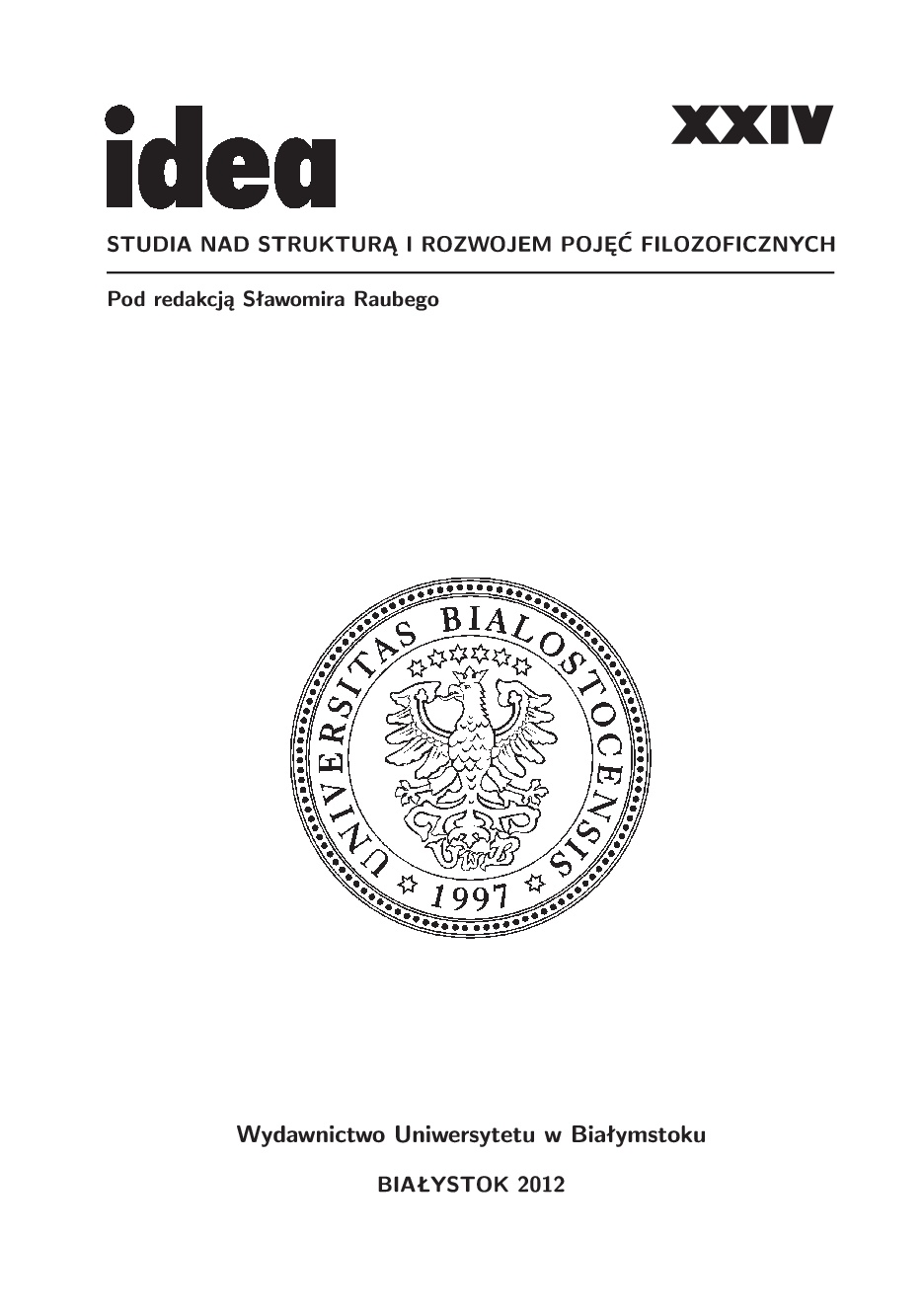Możliwości poznawcze analogii według Immanuela Kanta
Cognitive Abilities of Immanuel Kant
Author(s): J. Dariusz KiełbasińskiSubject(s): Epistemology, Logic, Cognitive Psychology
Published by: Wydawnictwo Uniwersytetu w Białymstoku
Summary/Abstract: Kant quite often refers to analogy though without really developing the theoretical aspects of the matter itself. Even when introducing in Critique of Pure Reason (“CPR”) an apparently clear distinction between analogy in philosophy and analogy in mathematics he was so succinct that there remain doubts as to whether the distinction is based on the criterion of fields wherein analogy might be applied or rather it refers to the structure of the analogy. The latter leaves room for differences in interpretation. While analogy in philosophy is built of four elements as a relation of two relations (a:b :: c:d), the structure of analogy in mathematics may either be same as this in philosophy or be conceived as built of three elements (a:b :: b:c), depending on the reference to source (with or without G.S.A. Mellin’s change to A179/B222 of CPR). In Lectures on Logic Kant distinguishes between analogy and induction; both these forms of reasoning are proper to the reflecting capacity to judge and, as such, opposed to inference by deduction (especially syllogism) which is specific to the reason (or: determining capacity to judge), closely linked to the understanding. The reflecting capacity to judge produces so-called reflective judgments which are of subjective validity only. Analogy, while hardly differing from induction in its practical use, shares with induction the common principium; let the assertion in the article be that the principium is drawn from the teleology of nature as derived in, inter alia, Critique of Judgment (the principle of purposiveness). Identity of grounds (par ratio) is required to formulate an analogy, which means that the corresponding elements in both pairs of an analogy have to belong to the same class; the classes, however, may only be singled out when, case by case, allowing for the context (category of relation) wherein par ratio is relevant.
Journal: Idea. Studia nad strukturą i rozwojem pojęć filozoficznych
- Issue Year: 1/2012
- Issue No: XXIV
- Page Range: 71-100
- Page Count: 30
- Language: Polish

